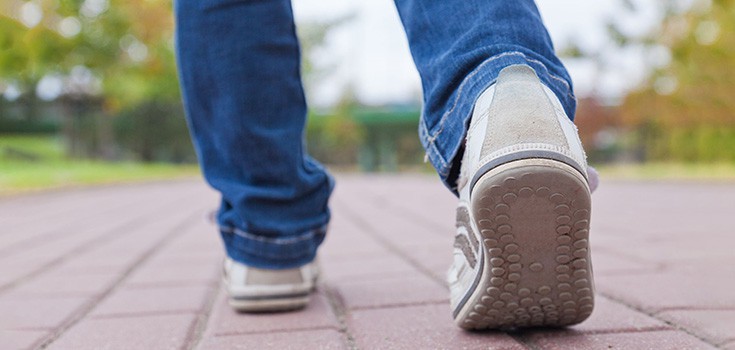Walking Speed Correlated to Lifespan in Seniors

According to a large study published in the Journal of the American Medical Association, the speed at which an older person walks seem to be at least as good at predicting projected lifespan as more traditional markers, including age, sex, chronic conditions, smoking history, blood pressure, body mass index, and hospitalization history.
Nine studies measured the walking speed of a total 34,485 adults over the age of 65 and living in the general community as opposed to nursing homes or other facilities. Gait speed was analyzed over a fixed distance with participants walking at a usual pace beginning from a standstill, and survival rates noted for up to 21 years.
Researches found that in general, the more quickly a person walks, the longer he or she can be expected to survive.
Lead author Stephanie Studenski, a geriatrician at the University of Pittsburgh Medical Center and at the Veteran Affairs Pittsburgh Healthcare System, says, “Whether you’re conscious of it or not, you may feel like grandpa’s doing pretty good because he’s got a spring in his step, he’s out moving around, and he looks lively. But I’m worried about Aunt Mary because she’s slowing down a lot,” Studenski said. “The observation that there’s something about how well you move that reflects health is almost implicit in human experience.”
In other words, this news is probably not shocking. Rather, it serves as a ‘medical confirmation’ of something we probably already knew, and a reminder that sometimes- or even, often- there is something to our intuition.
To codify the data in a more objective way, researchers created a chart, similar to a growth chart, which serves to estimate life expectancy based on age, gender and walking speed. Based on the chart, Individuals whose normal gait clocks in around 2.2 mph can expect to have a life expectancy falling right in the middle of the projected range based on age and gender. For every 0.1 meters per second faster one covers ground, his or her chances of dying in the next ten years decreased by 12%.
Dr. Studenski notes that while walking speed shows a definite correlation with projected lifespan, it is by no means the only contributing factor or predictor. One major point the research serves is to reinforce the role many body systems, including cardiovascular, musculoskeletal, are nervous play in overall health. Walking speed is often a fairly good representation of the health of these systems.
As Studenski puts it, “The best way to live as long and well as you can is to be in the best health you can be. Walking speed might help you reflect or monitor how healthy you are.”
Seth Landefeld, director of the University of California, San Francisco — Mt. Zion Center on Aging, adds, “Everyone slows down as they age. But there ar things people can do to slow down less. There is a lot of evidence that people who keep up physical activity as well as social activity do much better in all sorts of ways. They live longer. They have better health. Their mental health stays sharper. I would say this article reinforces the use-it-or-lose it message. If you keep walking and moving around, that will likely have benefits in terms of survival and overall health.”
Check out other benefits of walking, for all ages, here.
Additional Sources:
CNN News: Walking speed may predict survival in seniors
Discovery News: Walking Speed Could Predict Lifespan in Seniors
